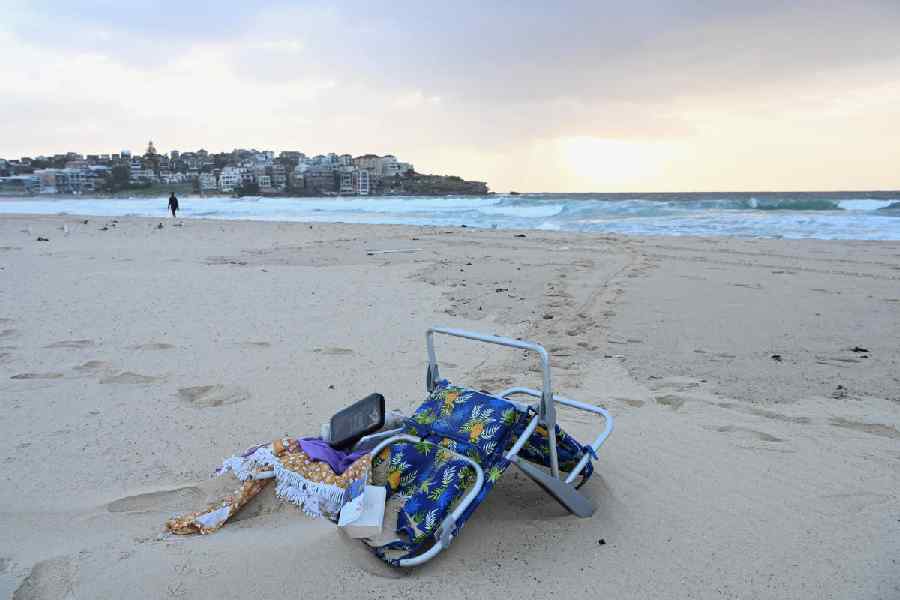 |
The steam train from Torquay chugs up the South Devon countryside, stopping at Churston. It is the setting for Agatha Christie’s The ABC Murders, a 1936 who-dun-it. In the book, a serial killer uses the ABC Railway Guide to taunt Christie’s Belgian detective Hercule Poirot. Each letter of the alphabet leaves a trail to where the next murder will take place. C turns out to be Churston.
The little station of Churston is just one of the spots on the Agatha Christie literary trail in South Devon. As fans prepare to celebrate her 122nd birth anniversary on September 15 and the annual Agatha Christie Festival, efforts are on to draw people to Torquay and surrounding areas in search of the locations that inspired the local writer and were linked to her dramatic life.
The author’s own house, Greenway, a 400-year-old structure set in extensive grounds, which was opened to the public two years ago, has become one of the major attractions of the tour. Fans of her 80 novels — which have sold more than two billion copies worldwide in more than 70 languages — pack the ferries that leave for Greenway or travel to her house in a vintage bus to recreate the era.
Described by Christie as “The loveliest place in the world” it was gifted to the National Trust by Christie’s grandson, Mathew Prichard, after the death of Agatha’s daughter Rosalind and her second husband Anthony Hicks.
“We wanted to ensure that visitors saw a family house,” Robyn Brown, general manager of the National Trust English Riviera, told The Telegraph. “Everything has been left as the family would have done. The garden hats in the hall, the board games in the living room, the chocolates and books in the library. We did not want it to become a Christie theme park, but show it as an everyday family home.” In the very first year, 99,035 visitors walked through the door of Greenway, added Brown.
Brown was part of the National Trust team that painstakingly restored Greenway House at a cost of £5.4 million, sorting out the thousands of objects that had been collected by the family over the generations.
Agatha Christie had seen Greenway as a child and it was her second husband, the archaeologist Max Mallowan, who persuaded her to buy it in 1938. She described it later: “So we went over to Greenway, and very beautiful the house and grounds were. A white Georgian house of about 1780 or 90, with woods sweeping down to the Dart below, and a lot of fine shrubs and trees — the ideal house, a dream house.”
 |
 |
| HOUSE OF MYSTERY: Agatha Christie bought Greenway (top) in 1938; its boathouse (above) was the fictional scene of crime in many of her novels Pix: National Trust Images & Shrabani Basu |
Her Steinway piano is in the drawing room along with the music scores that she enjoyed playing. Her desk — where she would sit and read her latest manuscript to her family — stands in a corner. The library is lined with the books that she read as a little girl including Little Women and classics such as The Pilgrim’s Progress. Her bedroom cupboard is left open to reveal the dresses that Christie — who died in 1976 — liked to wear, including the fur-lined coat she was so often photographed in. Also displayed is the dress she wore to the opening of the play The Mousetrap. The longest running play in Britain will celebrate its 60th birthday in November — a diamond jubilee for the play and yet another landmark for the author.
The first edition of her books is carefully displayed behind a glass screen and there are scrap books for visitors to read. One of the interesting objects in the Hall is the Baghdad Chest that featured in The Mystery of the Baghdad Chest (1939) and The Mystery of the Spanish Chest (1960).
Greenway House itself is the setting for several of Christie’s books. The boathouse is the famous setting for the murder of Marlene Tucker in Dead Man’s Folly. It can be seen from a distance as the boats cruise up the river, a tranquil setting for a brutal murder. It was also the setting for the fictional Sunny Point House in Ordeal by Innocence and the inspiration for the house of murdered philanderer Amyas Crale in Five Little Pigs.
Born in Torquay in 1890, the youngest of three sisters, Agatha was a shy girl who had a fine singing voice and might have been a concert-level pianist if her life hadn’t gone the way it did. She fell in love with the dashing Archie Christie who proposed to her after they went for a Wagner concert at the beautiful Pavilion — still the main theatre and concert hall in Torquay — and part of the Christie trail. They had a dramatic wedding on Christmas Day, 1914, at the start of World War I. The couple spent their honeymoon at the Grand Hotel in Torquay and Archie left for the front in France the very next day.
Agatha spent the war years volunteering as a nurse in the Red Cross Hospital in Torquay, ultimately working at the dispensary where she gained her knowledge of potent drugs and poisons which were to feature in her novels. Her only daughter, Rosalind, was born in 1919. Challenged by her sister Madge to write a book, she put her knowledge of poisons to use in her very first novel, The Mysterious Affair at Styles, published in 1920.
The marriage to Archie Christie proved an unhappy one, and in 1926 Agatha famously disappeared for 11 days, leading to a country-wide hunt for her. She re-surfaced at the Hydropathic Hotel in Harrogate where she had registered under the name of her husband’s mistress and soon ended the marriage.
In 1930 she met her second husband Max Mallowan during a trip to Baghdad. They married in September 1930 and bought Greenway in 1938.
Christie loved the South Devon countryside, setting more than 20 of her novels against the backdrop of the charming coastal towns, the hotels with their Edwardian grandeur and the rugged windswept moors. Torquay’s famous Imperial Hotel becomes the Majestic Hotel where Poirot stays in Peril At End House. The Imperial hotel appears as The Majestic in the Jane Marple murder mystery The Body in The Library and takes its own name to appear as The Imperial in Miss Marple’s final case Sleeping Murder published in 1976. It is on the balcony of The Imperial that Miss Marple reveals the killer.
A clear favourite of Christie was the mysterious Burgh Island, a small island off Bigbury Bay. In Evil Under The Sun (1941) she transforms it into Smuggler’s Island. The island is also the setting for her famous thriller And Then There Were None (1939) where 10 people are invited to a lonely mansion on the fictional Soldier’s Island by a host who fails to appear. One by one they begin to die as they share the secrets of their wicked past.
Christie’s ability to tap into the dark side of people, to produce murderers in seemingly rural idylls has never stopped to fascinate. No wonder her house and the locations she loved and recreated in her books continue to draw in the fans.










